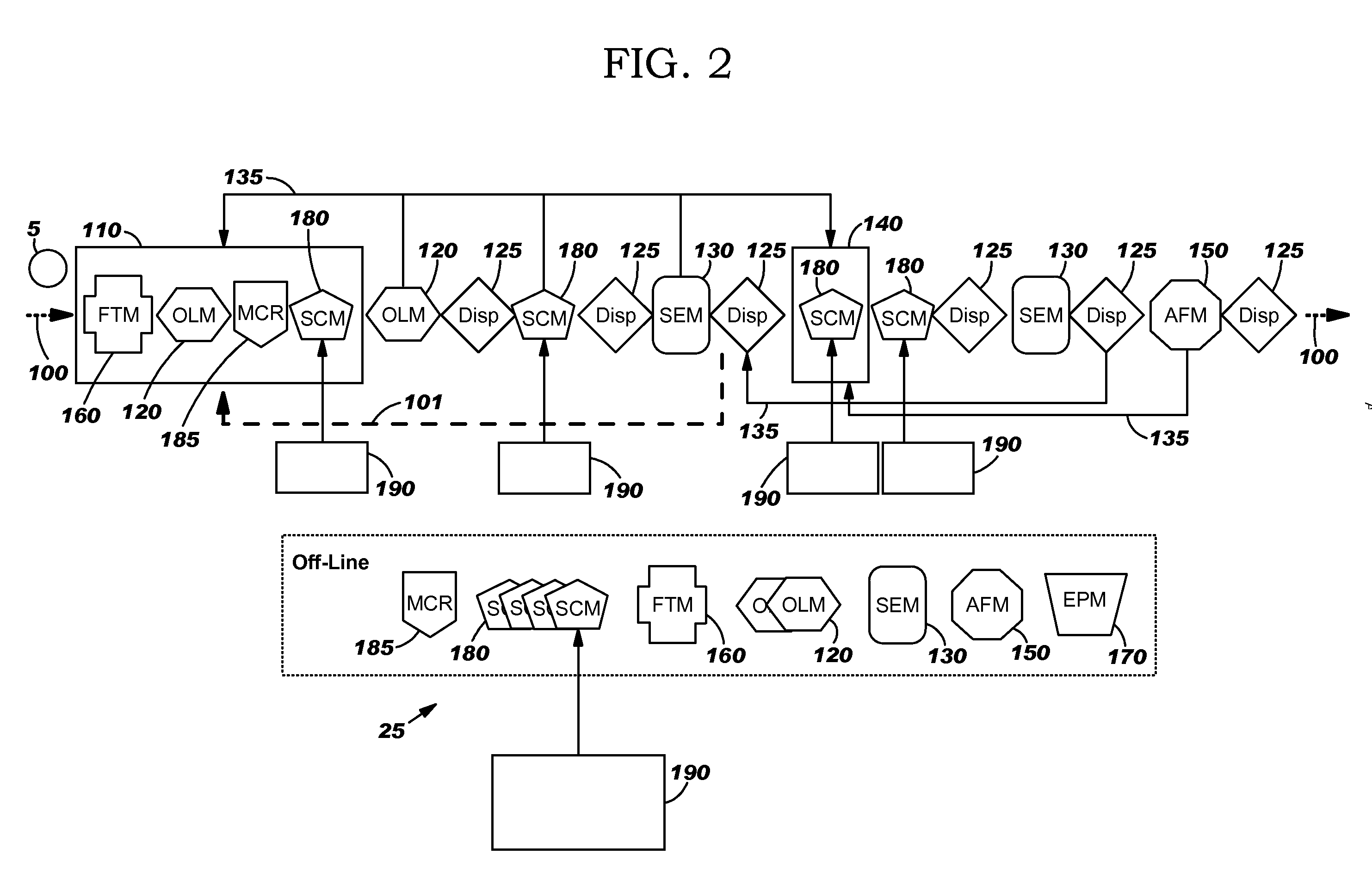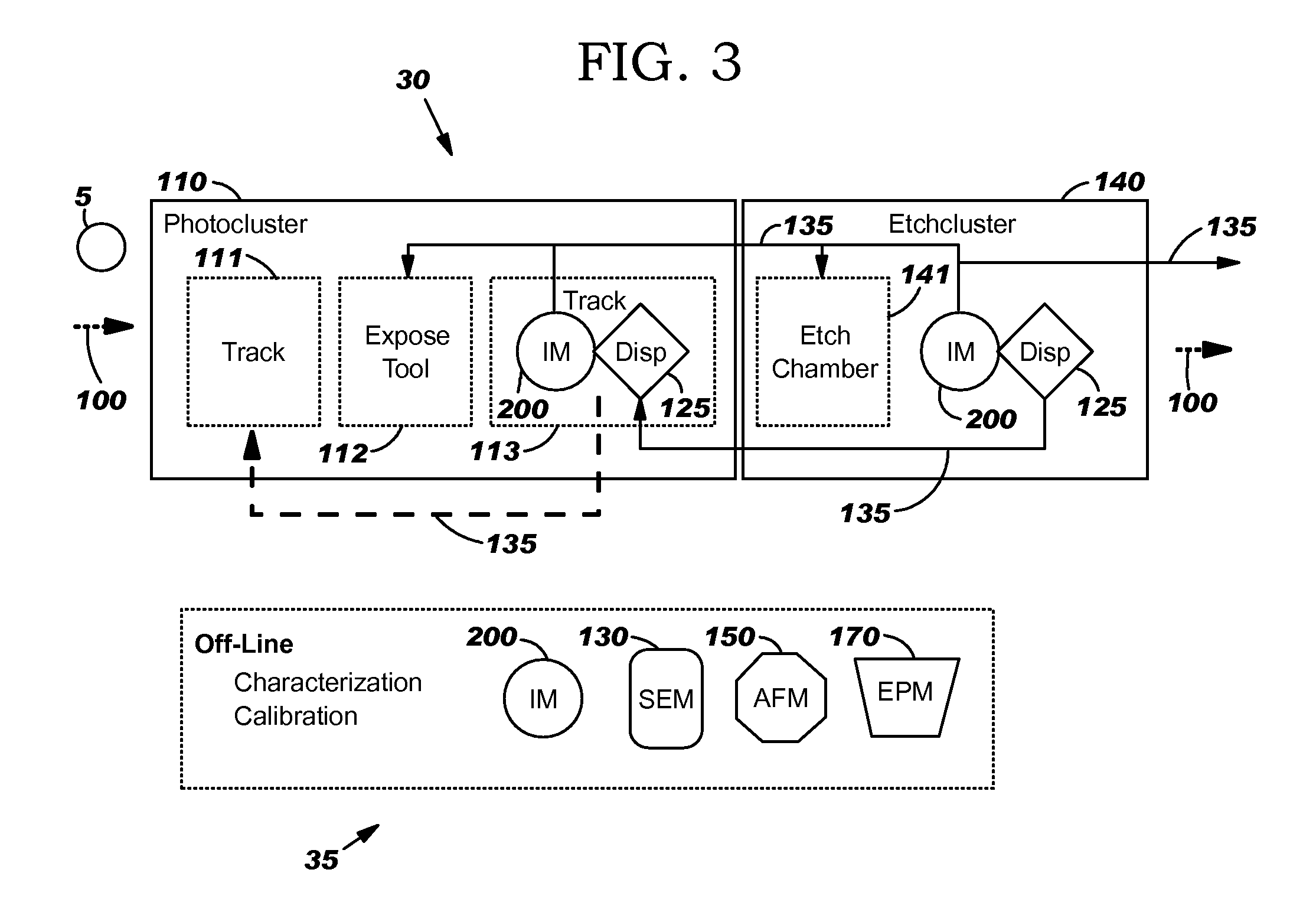Differential critical dimension and overlay metrology apparatus and measurement method
- Summary
- Abstract
- Description
- Claims
- Application Information
AI Technical Summary
Benefits of technology
Problems solved by technology
Method used
Image
Examples
embodiment 1701
[0124] A preferred embodiment 1701 of the inventive discrete differential grating target 455 for use in measuring CD is shown in FIG. 17. This exemplary target 1701 provides a preferred means of CD measurement that places no restriction on the nominal CD size. The target grating 1701 is divided into two or more sub-pattern regions, e.g. Region 1 (reference numeral 1731) and Region 2 (reference numeral 1732), comprised of lines, e.g. 1711, 1712, respectively, having length H oriented along the y-direction. The nominal widths, e.g. Wd1, Wd2, of lines 1711, 1712, respectively, are uniform within each sub-pattern region 1731, 1732, respectively, but are different between sub-pattern regions 1731, 1732, respectively (e.g. first sub-pattern region 1731 including lines 1711 having nominal width Wd1, and second sub-pattern region 1732 having lines 1712 of nominal width Wd2). The features 1711, 1712 are preferably joined by connecting regions 1750, which can help avoid line shortening of the...
embodiment 3000
[0134] Another target embodiment 3000, shown in FIG. 30, enables the application of the inventive differential diffractometry measurement to the parallel acquisition of through-pitch CD measurements. The measured dependence of the printed CD on pitch or period is critical to the determination of the Optical Proximity Correction (OPC) rules. OPC rules govern the modification of product mask layouts to ensure simultaneous printing of differently pitched features to a common size. A current limitation of OPC rules generation is that the conventional SEM CD measurement approach is slow and laborious. In particular, SEM CD measurement precludes the gathering of sufficient data to ensure the matching of the printed CDs over a representative process window. The target of FIG. 30 is comprised of multiple differential gratings 3001, 3002, 3003, 3004, each similar in design to that shown in FIG. 17 where the period, Pa, Pb, Pc, Pd, respectively, is changed from one differential grating to the...
PUM
 Login to View More
Login to View More Abstract
Description
Claims
Application Information
 Login to View More
Login to View More - R&D
- Intellectual Property
- Life Sciences
- Materials
- Tech Scout
- Unparalleled Data Quality
- Higher Quality Content
- 60% Fewer Hallucinations
Browse by: Latest US Patents, China's latest patents, Technical Efficacy Thesaurus, Application Domain, Technology Topic, Popular Technical Reports.
© 2025 PatSnap. All rights reserved.Legal|Privacy policy|Modern Slavery Act Transparency Statement|Sitemap|About US| Contact US: help@patsnap.com



